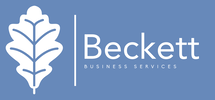I plan to begin sharing the little tidbits of news and helpful tips that occur from time-to-time that I think may be helpful or of interest to QuickBooks customers and Bookkeepers. Please let me know if there is anything you would particularly be interested in seeing here, I always appreciate feedback (good and not-so-good) and new ideas.
This blog is going to brief for now -- sort of a beginning tip of the day, but I consider it an important one....
There are many keyboard shortcuts in QuickBooks, and I highly recommend that you learn them along the way to help your work flow more smoothly and efficiently. I think that once you begin using them regularly, and they become second nature, you will find the benefits well worth the effort. When you are doing data entry especially, it means being able to keep your hands on the keyboard without constantly reaching for the mouse. For now, I will be covering only tips for QuickBooks Desktop PC versions. If you are interested in shortcuts QuickBooks Mac or QuickBooks Online versions, please let me know.
Today I just want to cover a little about moving through the data entry forms, such as Enter Bills, Write Checks, Enter Invoices, etc. Everyone has their own style, and if you feel totally comfortable with yours you may not want to read any further. However, if you are just beginning with QuickBooks, or data entry feels a little clumsy and inefficient to you this bit of information (from experience) may help you.
First, go to Edit - Preferences - General - and be sure the box next to the option 'Pressing Enter moves between fields' is checked. This will enable you to just click the 'Enter' key when you have finished entering data in a field to move to the next data field. (You will still be able to alternatively use the 'Tab' key to move through the fields.)
My first tip in this series, especially in the beginning, is when you are in a data entry form, (such as Enter Bill or Create Invoice, or Write Check, etc.) always begin with the first field (where your cursor is blinking), enter the data in that field and then use 'Enter' to move from field to field entering the data requested in each -- or using 'Enter' to skip and continue to the next field. This way, you will not be as likely to miss changing or entering important data that can cause issues along the way. For instance, some fields contain default data such as dates, due dates, previous entry information, etc. that may not be accurate or correct. Dates are very important in QuickBooks, so a 'default' date left in place of a correct date can have a negative impact on reports and processing.
When you have finished entering data in that form and are ready to enter another, try the first shortcut I'll cover here,which is also one of the most-used 'Ctrl-Enter' (This means hold down the Control key while pressing Enter, which can be accomplished with your right thumb and index finger). This has the same result as clicking on 'Save and New' button, but your hands don't need to leave the keyboard.
So.... try this out for a while if you like. I guarantee that even though it may feel a bit awkward at first, it will become second nature in a short time and will save you a ton of time in the long run!
Thanks, and I look forward to hearing your feedback!

 RSS Feed
RSS Feed